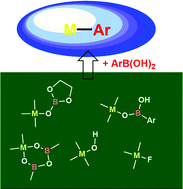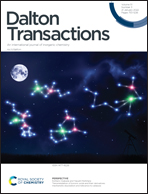Transmetalation of boronic acids and their derivatives: mechanistic elucidation and relevance to catalysis
Abstract
The Suzuki–Miyaura reaction (the cross-coupling reaction of boronic acids with organic halides catalysed by Pd complexes) has been recognised as a useful synthetic organic reaction that forms a C(sp2)–C(sp2) bond. The catalytic cycle of the reaction involves the transmetalation of aryl- and alkenylboronic acids with Pd(II) complexes. It migrates the aryl and alkenyl groups of boronic acid to Pd and produces a Pd–C bond. Many studies have investigated the mechanism of transmetalation. They elucidated the mechanism of the organometallic reaction and its role as a fundamental step in catalytic reactions. This perspective reviews studies on the transmetalation of aryl- and alkenylboronic acids with Pd(II) complexes. Emphasis was laid on the structures and chemical properties of the intermediate Pd complexes and the effects of OH− on the pathways of the catalytic Suzuki–Miyaura reaction. The reactions of arylboronic acids with Rh(I)–OH complexes were investigated, which are relevant to the mechanism of Rh-catalysed addition of aryl boronic acids to enones and aldehydes. Recent studies on the transmetalation of boronic acids with other late transition metals such as Fe(II), Co(I), Pt(II), Au(III), and Au(I) are presented with the related catalytic reactions and their utilisation in the synthesis of aromatic molecules and π-conjugated materials.

- This article is part of the themed collection: 2021 Frontier and Perspective articles


 Please wait while we load your content...
Please wait while we load your content...